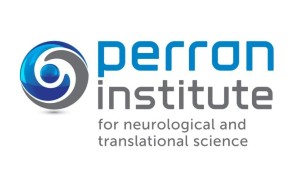We partner with industry, government, communities and other research providers across our core research areas: Food Security, Health Futures and Sustainable Development. There are as many models of successful engagement as there are potential partners, demonstrated by the examples below.
Perron Institute
Improving healthcare through personalised medicine based on genetics research.
Murdoch has established strengths in fields relevant to personalised medicine, and is formalising a long-term link with the Perron Institute (Western Australia’s oldest medical research institute) by jointly establishing the Perron Centre for Future Medicine on campus.
The central vision of the Perron Institute is to create better healthcare through personalised medicine based on genetics research. Personalised medicine promises to change the healthcare sector by introducing more effective individualised treatments for a range of diseases, in particular rare inherited diseases where treatment options are limited or unavailable.
The new centre’s mission is to undertake world-leading research on tailored molecular therapies for human disease with the goal of improving patient outcomes. The Centre’s research programs will build upon Murdoch’s strengths in molecular therapy and cover a range of diseases. The Centre will also provide access to clinics and clinical trials facilities, adding a clinical capacity to Murdoch’s research.
Sarepta Therapeutics
Applying Sarepta’s PMO technology to treatments for neuromuscular and central nervous system diseases.

Murdoch now has a four-year agreement with Sarepta Therapeutics, enabling our researchers to apply Sarepta’s phosphorodiamidate morpholino oligomer (PMO) technology and chemistry in developing treatment solutions for diseases outside of Duchenne Muscular Dystrophy (DMD). Commercial parties like Sarepta are essential in bringing these investigational drugs onto the market.
Murdoch researchers at the Perron Centre for Future Medicine haven been targeting the genetic defects responsible for Duchenne Muscular Dystrophy (DMD) since the 1990s, and are building upon this research, which won an Australian Museum Eureka Prize in 2013. The researchers were recognised for developing a new investigational drug designed to ‘skip’ the faulty part of the gene message in children suffering from DMD. Drugs such as these are designed to treat different mutations in the dystrophin gene, and the technology has the potential to translate to other genetic diseases such as cystic fibrosis, metabolic disorders and possibly even Alzheimer’s.
This collaboration provides Murdoch researchers with access to Sarepta’s PMO platform technology, as well as funding for researchers and materials. Sarepta will have exclusive first rights to license technology and/or products resulting from the research projects.
Western Australian Health Translation Network
Building on WA’s medical research strengths to expedite the translation from medical discovery to patient care.
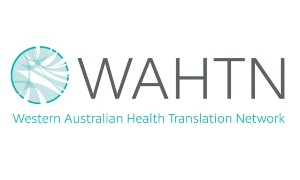
The Western Australian Health Translation Network (WAHTN) is a multi-site, State-wide health translation network. It builds on WA’s medical research strengths to maximise collaboration in medical research and enable the rapid translation of medical discoveries to patient care and community health. It provides leadership at national and international levels in innovative health research, collaboration and translation. Murdoch has been a partner since its inception.
The major hospitals, medical research institutes and five universities that comprise the WAHTN have benefitted enormously from substantial State investment in new facilities in recent years, creating exciting new opportunities for health and medical researchers to work closely with clinicians to benefit patients and the health of the community. Situated adjacent to the Fiona Stanley and St John of God Hospital complex, Murdoch University is ideally placed to lead the Southern Health corridor in its next stage of development.
Chevron
Shaping the next generation of leaders in conservation and environmental management at the Harry Butler Institute.
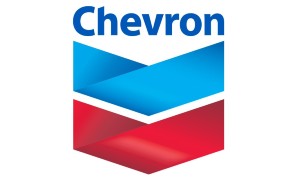
Murdoch University and global energy producer Chevron have partnered to establish the Harry Butler Institute. This initiative not only honours the legacy of one of Western Australia’s environmental pioneers, it is shaping the next generation of leaders in conservation and environmental management.
Through the Harry Butler Institute, Chevron and Murdoch promote high-quality teaching and research in the coexistence of business and biodiversity. The Chevron Harry Butler Chair in Environmental Management and Biosecurity leads and coordinates education, research and technical advice, enhancing Chevron Australia’s own research activities and the quality of environmental management in its operations.
The Institute is providing new generations of students with the opportunity to undertake research in biosecurity science and environmental science. It also offers graduates a pathway towards employment with Chevron, with students to be involved in the ongoing monitoring and scientific work taking place on Barrow Island. Annually, Murdoch offers five Harry Butler Institute Honours Scholarships (worth $4,500) to students enrolling in biological, conservation and environmental sciences.
Peel-Harvey Catchment Council
Seeking sustainable solutions to estuarine health amid rapid growth in coastal regions.

Rapid coastal population growth demands catchment development to accommodate it, but also assumes the continued delivery of a healthy estuarine ecosystem and its associated societal benefits. The pathway to achieving both is unclear.
Dr Fiona Valesini in the School of Veterinary and Life Sciences is leading an Australian Research Council (ARC) Linkage Project "Balancing estuarine and societal health in a changing environment" with Dr Christopher Hallett, in partnership with the Department of Water, Department of Premier and Cabinet, City of Mandurah and the Peel-Harvey Catchment Council Shire of Murray.
This project aims to facilitate sustainable development in a fast-growing coastal region (Peel–Harvey, southwestern Australia). By exploiting over 30 years of data for this catchment–estuary system and integrating ecological, hydrological, biogeochemical, modelling and socio-economic expertise, they seek to link primary catchment drivers to estuarine health response, quantify estuarine ecological health and ecosystem services under both historical and future scenarios, and test resilience across the human–natural system.
The aim is to create evidence-based catchment planning solutions that optimise trade-offs between socio-economic development goals and downstream impacts on estuarine health. Using the Peel–Harvey system as a case study, this project seeks to identify those land-planning strategies that are most likely to achieve this balance and better sustain our estuaries, and the industries, lifestyles and ecology they support, into the future.
Aquatic Megafauna Research Unit
Assessing a bottlenose dolphin population in WA’s south-west to minimise the impact of marine activity.
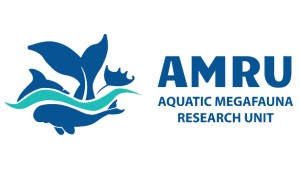
The South West Marine Research Program (SWMRP) was founded in 2006 through a partnership between Murdoch University and the Bunbury Dolphin Discovery Centre, with support from the South West Development Commission. It is now composed of partners from industry, government, research and the community.
The SWMRP is assessing the long-term viability of a bottlenose dolphin population off Bunbury, south-western Australia. Through this research, a detailed understanding of the characteristics of the local dolphin population is being obtained. The program is providing critical information for assessing the potential impacts of human activity on dolphins, assisting industry partners in planning their activities in the marine environment while minimising their impacts on the local dolphin population.
Mintope
Supporting Christmas Island with the transition to agriculture for a future beyond phosphate mining.
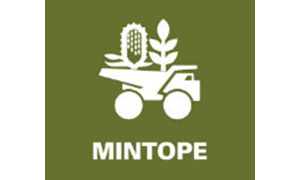
The Christmas Island economy is currently dependent on phosphate mining. Mining reserves are estimated to last for a further twenty years. Murdoch is assisting the Island to plan for a post-mining economy through several Mining to Plant Enterprises (Mintope) projects, in collaboration with the Commonwealth Department of Infrastructure and Regional Development and Christmas Island Phosphates.
Mintope Project 1 assessed the viability of rehabilitating ex-phosphate-mined lands to land suitable for agriculture, and from that agricultural practice to then supply food and secondary economies to the Christmas Island population.
Mintope Project 2 was a cropping program to demonstrate that rehabilitation phosphate mine sites can be made suitable for agriculture and that the local seasonal variation is understood. It also covers plant nutrition requirements and remediation activities.
Mintope Project 3 was launched in 2017. The project is a specialist research-based soil and cropping program undertaken on Christmas Island, in the areas of crop agronomy, sowing, integrated pest and weed management, and harvesting, including seed cleaning and storage.
Western Barley Genetics Alliance
Breeding better barley for productivity, sustainability and optimisation for China’s brewing market.
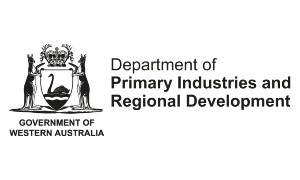
The Western Barley Genetics Alliance is an agreement jointly undertaken by the Western Australian Department of Primary Industries and Regional Development and Murdoch University to increase and sustain the productivity and profitability of the WA and national barley industry.
At Murdoch, scientists use a range of strategies to develop favourable traits in grains, addressing current and future industry-identified gaps.
Collaborating with scientists from partner organisations, Murdoch has developed a program which aims to produce cultivars of barley with enhanced productivity, sustainability and optimal features for export to the Chinese brewing market. This includes the cultivars that maintain protein production under conditions of extreme salinity and drought, as well as cultivars that reduce cloudiness and improve the shelf life of beer.
Peel Development Commission
Exploring the business model for technology-driven urban farming to enhance the agricultural food industry.
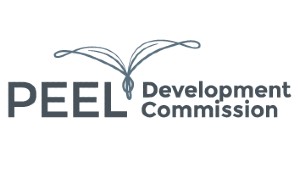
The Smart Urban Farm Factories study explores the business model for new forms of technology-driven urban farming in Western Australia’s Peel Region. With technology-driven advancements seeing agricultural productivity increase by about 260 per cent globally over the last 20 years, it is estimated that technological innovations could enhance the agrifood value chain activity by about $570m.
Murdoch undertook a feasibility study on behalf of the Peel Development Commission, for new forms of urban horticulture in the Peel region, with an emphasis on innovative above-ground food to address a number of regional issues including nutrient flow in the Peel-Harvey catchment area, sustainable water management, and high unemployment.
Working with Murdoch and Murdoch Singapore, investment in new forms of urban farming in the Peel region will include: applying industrial production techniques that insulate food production from the natural environment to provide biosecurity safeguards, intensity, efficiency and increased yield; closed-looped systems to maximise water efficiency and reduce nutrient run-off; and sustainable agricultural activities within an urbanising environment. There is the potential to export these innovative urban farming solutions around the globe.
Western Australian Defence Research Universities
Defence science program
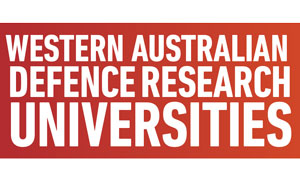
Contributing world-leading science and technology capabilities to deliver innovative solutions for defence.
Together with Curtin university, The University of Western Australia and Edith Cowan University, Murdoch is a partner in the Defence Science Program, addressing the Australian Department of Defence’s Priority Innovation Needs and supporting the Australian Defence Force’s local access to the latest technology.
We contribute world-leading capability in human performance, biosecurity and disease surveillance, material design and properties, visualisation and tracking technologies, artificial intelligence, big data security, and remote and autonomous technologies.
Pawsey Supercomputing Centre
Supporting research around the world with supercomputing, large-scale data storage and visualisation.
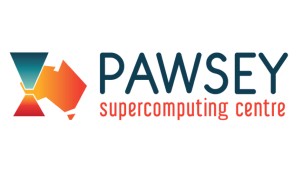
The Pawsey Supercomputing Centre is energising research using supercomputing, large scale data storage and visualisation in Western Australia.
It supports research across Australia and internationally, covering projects in a diverse range of scientific disciplines such as geoscience, radio astronomy, nanotechnology and medicine.
It is an unincorporated joint venture between CSIRO, Curtin University, Edith Cowan University, Murdoch University and The University of Western Australia and is supported by the Western Australian and Federal Governments.
Singapore Centre for Research in Innovation, Productivity and Technology (SCRIPT)
Supporting industry and government innovation through technology in Singapore and the Asia region.

SCRIPT is one of Australia’s first research centres in Singapore – an interdisciplinary productivity research and development centre, established by Murdoch University to support the growth and innovation drive in Singapore and the region.
Its focus is on helping industry and government realise productivity benefits through innovation and technological interventions. For example, SCRIPT researchers led a Singapore government funded benchmarking study for the manufacturing sector.
SCRIPT has also commercialised a new approach to industrial safety training using virtual and augmented reality simulators in the Singapore start-up FutureSafe Tech. The company has attracted venture capital funding and has already deployed its technology with Singapore’s largest training provider, NTUC Learning Hub.
